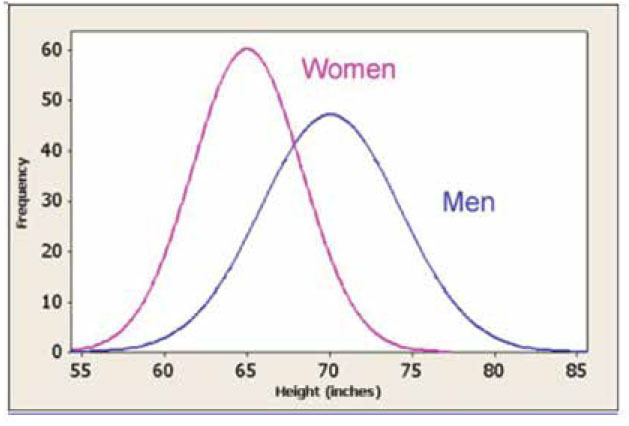






Variance: Part 1by Steve Zolotow | Published: Mar 25, 2020 |
|
|
Variance in poker has been a hot topic lately. Since a lot of what I have read and heard seems wrong, or at least misguided, I thought I should try to clarify some concepts and add in my opinions, which in some cases are different than mainstream thoughts on the subject. As a disclaimer, I want to state that I am not a statistician, and that my academic statistical studies occurred around 50 years ago. My intention is to focus on the practical and avoid getting too technical.
In this series I want to cover ways of describing data with the emphasis on variance (or standard deviation) and the average (mean.) More importantly, I will try to explain when it is bad, the variance we want to reduce, and when it is good, the variance we want to embrace.
All poker players should keep records of their results in as much detail as possible. These records provide data that you can analyze in a variety of ways. The analysis frequently highlights things you could do better, things that you are doing well and should do more of, and may lead you to rethink what games, stakes, tournaments, or venues will have the best chance of helping you achieve your poker goals.
The two main statistical tools you will use are the mean and standard deviation. Neither was developed with poker players in mind. They are the most common way in which large masses of data are summarized. The data might relate to height, weight, income, effectiveness of a drug, money spent on groceries, voter preferences or pretty much anything else where you have a lot of separate units of data, called observations. You want to describe these observations. A good starting point is to arrange them in numerical order, which is traditionally done you from the smallest to the largest. Next you add them up and divide by the number of observations you have. This gives you the average or mean.
If you have a lot of observations, you can create a graph or pictorial representation. For example, here is a graph of human height I found online:

This graph doesn’t specify what the average heights and standard deviations are, but it does give a reasonable visual summary of the data. It also separates the data for men and women. If we were discussing our poker results, we might lump everything together or we might separate the data into a few groups. What groups? Online and live. No-limit hold’em and pot-limit Omaha. If you have a lot of data, play with it. Even if you only play no-limit hold’em, you might divide your results by casino Bellagio and Borgata or by stake $2-$5, $5-$10 and $10-$20. Even this limited grouping might give you some useful information. A few years back I kept careful records of my play and found that my hourly average was approximately $60 at $2-$5, $100 at $5-$10 and $70 at $10-$20. These numbers are instructive. I made the most money at $5-$10 and the least at $2-$5, with $10-$20 in the middle.
Years ago, someone tabulated his results in California card clubs, and found his best hourly results came late on Fridays near the end of the month. It is easy to dismiss this as being random results from a small sample. There are reasons why this might really be the case. A lot of people work during the day on Friday, and then head off the start their weekend by playing poker. By late Friday, the ones still playing are probably exhausted, losing and on tilt. They could be playing really badly. Why does close to the end of the month matter? That is when amateurs get their pay checks and retired people get their social security. We haven’t gotten to variance yet, but we will.
The things to take away from this discussion so far are: Keep records and analyze them. If you find one game or situation is significantly more profitable than others, allocate as much playing time as you can to it. ♠
 Steve ‘Zee’ Zolotow, aka The Bald Eagle, is a successful gamesplayer. He has been a full-time gambler for over 35 years. With two WSOP bracelets and few million in tournament cashes, he is easing into retirement. He currently devotes most of his time to poker. He can be found at some major tournaments and playing in cash games in Vegas. When escaping from poker, he hangs out in his bars on Avenue A in New York City -The Library near Houston and Doc Holliday’s on 9th St. are his favorites.
Steve ‘Zee’ Zolotow, aka The Bald Eagle, is a successful gamesplayer. He has been a full-time gambler for over 35 years. With two WSOP bracelets and few million in tournament cashes, he is easing into retirement. He currently devotes most of his time to poker. He can be found at some major tournaments and playing in cash games in Vegas. When escaping from poker, he hangs out in his bars on Avenue A in New York City -The Library near Houston and Doc Holliday’s on 9th St. are his favorites.
Features
The Inside Straight
Strategies & Analysis